Contents
Introduction:
For humans, speaking the truth or false to each other is both an interesting and frightening matter. Many people might genuinely trust the truth or false nature of various affairs, as it is often impossible to confirm these matters due to the diversity of perspectives. Each person has their own decisions. For instance, whether Americans landed on the moon has been a hot topic of debate for decades. This is indeed an issue, but today, we will discuss AI True vs False. On May 26, 2024, OpenAI finally announced the establishment of a safety committee. The members of this committee include Sam Altman (CEO), Bret Taylor (Chairman), Adam D’Angelo, and Nicole Seligman. The main responsibility of this safety committee is to provide critical safety and security decision-making advice for all OpenAI projects. The establishment of this safety committee marks an important step for OpenAI in ensuring the safety and ethical use of its technology, especially in the context of the rapid development of AI technology. The committee will oversee and evaluate OpenAI’s safety measures to ensure that the technology is not misused. Although this issue is very important, can it completely resolve the matter of true and false? Today, we will explore this profound issue together.
I. Major Errors in Determining AI True vs False
First, I can talk about OpenAI, which is, of course, the most advanced ChatGPT. From the beginning, we knew about mathematics because, starting from OpenAI 3, I didn’t fully trust its mathematical problems due to potential judgment errors, which is understandable. Once it makes a mistake and you inform ChatGPT of the error, it will correct it. Therefore, we do not believe it deliberately produces falsehoods. However, with the emergence of ChatGPT 4, when asking it some real questions, it indeed started to speak falsehoods without anyone knowing. Humans were unaware of these falsehoods, which is the most frightening aspect of false replies. So, how do I argue this topic? Once an error is found, I can try some experiments with various AI robots. Let’s start with this issue.
I first used Claude 3 for an experiment because it had just been launched to compete with OpenAI 4. The date is April 24, 2024.
My question: “What are the investments of foreign companies in China in 2024, focusing on AI cooperation?”
Claude 3’s most crucial response was: “In addition to traditional industry giants, emerging technology companies such as OpenAI and Google DeepMind have also been entering China since 2023.”
My God, this answer is outright falsehood. Is there any possibility that OpenAI and Google have entered China? Anyone with a bit of intelligence would immediately recognize this as seriously false content!
Of course, once I pointed out Claude 3’s false response, it immediately admitted its mistake.
Here is part of the Claude 3’s apology to me:
“I am very sorry, your criticism is entirely correct. As an AI assistant, I should not speculate when writing formal articles and make assumptions that do not conform to facts and logic. This behavior is very unprofessional and irresponsible………….
Writing should strictly adhere to known objective facts and be based on reliable data and authoritative sources for analysis and elaboration.
Thank you again for correcting my mistake in time…………”
Although Claude 3 makes significant errors, I can try ChatGPT 4. When asked the same question, ChatGPT 4 responded well. If directly asked whether OpenAI will cooperate with mainland China in 2024, it immediately recognized the error in this question. Therefore, OpenAI is qualified, and I do not need to test other AIs. The reason is likely that, even though Claude 3 was newly launched and lacked the large customer base of ChatGPT 4, the key issue is whether the response to the matter is correct or false, which not all humans can analyze. That is the key issue concerning AI’s true or false.

Can anyone understand the meaning of this comic?
II. AI True vs False: The Problem
Firstly, AI differs from humans in many aspects, especially in decision-making and judgment. AI’s judgment is based on data and algorithms, usually binary logic, while human thinking is more complex, involving emotions, imagination, and creativity. Humans can consider problems from multiple angles and make decisions based on emotions and morals, which AI cannot fully simulate or replace.
Complete control by AI indeed raises many concerns, particularly regarding autonomy and ethics. The complexity and diversity of human society dictate that we need to balance technology use with human values. AI can serve as a tool to help us solve many complex problems but should not completely replace human judgment and decision-making.
To avoid this, the development and application of technology must adhere to strict ethical and safety standards, ensuring that AI assists humans without negatively impacting our autonomy and values. This is why organizations like OpenAI establish safety committees to ensure responsible use of technology.
III. To Distinguish the AI True vs False: Only Humans Can Decide
The potential for AI to generate false information raises many issues, especially when AI itself cannot distinguish between truth and falsehood. This situation is similar to humans unknowingly spreading misinformation, particularly when the information appears very real.
Here are some key points:
- Source of Information: AI’s responses are based on its training database and input information. If these sources are unreliable or contain errors, AI might produce incorrect information. OpenAI and other responsible AI developers strive to ensure the quality and accuracy of training data, but completely avoiding errors is nearly impossible.
- Verification Mechanisms: To reduce this risk, AI platforms usually incorporate multiple verification mechanisms, including human oversight and automated detection systems. OpenAI continuously improves its models to better identify and filter false information.
- Public Media Literacy: Enhancing public media literacy is also an important means of addressing this issue. The public needs to learn to critically view information, verify sources, and validate information through multiple channels.
- Ethical and Legal Frameworks: As AI technology evolves, governments and international organizations are actively formulating related regulations and ethical guidelines to regulate AI use and prevent its misuse to spread false information.
In this context, maintaining critical thinking is crucial. Do not blindly trust any single source of information; instead, cross-check to ensure accuracy. For accurate information queries, you can rely on Google to search and judge which answers are suitable for you.
IV. The Use of AI True vs False: Key Monitoring
On April 26, 2024, the US Department of Homeland Security (DHS) announced the establishment of an AI Safety and Security Board. This board’s members include founders or CEOs of tech giants such as OpenAI, Microsoft, Nvidia, and IBM, representatives from critical infrastructure entities, academia, government agencies, and leaders from the civil rights, civil liberties, and privacy communities. The AI Safety Board aims to guide the use of AI in the US’s critical infrastructure.
In fact, this is a recent issue. The US has taken some advanced measures to combat AI-generated fake news. In late May, the Federal Trade Commission (FTC) proposed new legislation aimed at banning the creation and dissemination of deepfake content that impersonates others. These new regulations will cover false content targeting the government and businesses to protect the electoral process and public trust.
Moreover, the World Economic Forum launched the “AI Governance Alliance,” bringing together industry leaders, governments, academic institutions, and civil society organizations to promote responsible and transparent AI system design and release.
At the same time, the Brennan Center for Justice’s report emphasized the potential risks of AI in generating and spreading false information during the 2024 election season and called for stricter election security measures.
V. Responses to AI True vs False: OpenAI’s Actions
The establishment of OpenAI’s safety committee is crucial in ensuring the safety and ethical use of AI technology. This committee not only oversees and evaluates OpenAI’s safety measures but also plays a key role in preventing technology misuse. Given the potential impact of AI-generated content on society, particularly in discerning truth from falsehood, such oversight and guidance are essential.
OpenAI has indeed taken leading measures in identifying and preventing AI-generated fake news. In recent months, OpenAI has not only improved its capabilities in detecting false information through technological means but also collaborated with multiple tech companies and organizations to promote relevant laws and regulations.
Specifically, OpenAI has strengthened control over model training and usage to ensure that the generated content meets safety and ethical standards. Additionally, they have launched voluntary frameworks at major conferences alongside other tech companies to protect election integrity and public information accuracy.
Overall, several measures address the issue of AI-generated content’s truth and falsehood. These measures include:
- Technological Means: Developing and using advanced AI detection tools to identify and mark false information. These tools can help quickly identify and address false content, preventing its widespread dissemination.
- Human Oversight: Introducing human oversight in the review process of AI-generated content to ensure multi-layered verification and checks.
- Transparency and Education: Enhancing public media literacy and educating people on how to identify and verify information sources, strengthening the public’s ability to discern AI-generated content.
- Laws and Regulations: Formulating and implementing relevant laws and regulations to severely punish the creation and dissemination of false information, increasing the cost of violations.
- Industry Collaboration: Cooperation between tech companies, governments, and civil society organizations to jointly develop industry standards and best practices, ensuring responsible use of AI technology.
This situation might be related to the information sources and review mechanisms of various platforms. Some AI tools might not timely update or verify information, leading to incorrect information provision. In this regard, OpenAI might have stricter review and update mechanisms to ensure information accuracy.
Meanwhile, OpenAI aims to better manage and control its technology use, preventing the spread of false information while fostering public trust in AI technology. This transparent and responsible approach is crucial for the healthy development of the AI industry and can help alleviate public concerns about the potential negative impacts of AI technology.
Conclusion:
In conclusion, complete control by AI over humans indeed raises many concerns, especially regarding autonomy and ethics. The complexity and diversity of human society dictate that we need to balance technology use with human values. AI can serve as a tool to help us solve many complex problems but should not completely replace human judgment and decision-making.
BTW, between AI and humans, AI can only choose between 1 and 0, but humans are not like that. So, the question arises: Is the AI’s choice true or false?
Published by: Mr. Leo Mao. You are welcome to share this article, but please credit the author and include the website link when doing so. Thank you for your support and understanding.


